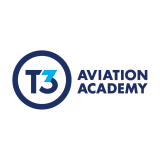This informal CPD article The Fundamental Differences Between Training and Facilitation was provided by Capt. Nadhem AlHamad, CEO at T3 Aviation Academy, the Middle East’s leading aviation training provider.
Many of us get confused and think that interactive training is similar to facilitation. Depending on the needs of your participants, you may be called to provide training or facilitate a discussion of ideas. Knowing when to provide what is key to ensuring the right approach is used in conjunction with the given scenario or situation.
Learning may take many forms and the goal is to deliver this by deploying the best method for the audience or participants to meet the desired learning outcomes. In this article, I’ll be sharing my take and understanding on the main differences between training and facilitation and when is best to use which method, based on my experience for over 25 years in the training industry.
What are the Main Differences Between Training and Facilitation?
The primary purpose of training is to deliver results. Training is made available when it’s imperative to improve one’s performance in a given skill or function and where the provision of theoretical information and engagement in activities to help retain information is required. In other words, training is knowledge transfer through imparting learning and materials or content to support this learning. In contrast, facilitation paves the way for thinking in a group setting where one doesn’t impart learning and content but rather, encourages the participants to think for themselves.
Another difference is that training follows a hierarchal framework where the knowledge transfer starts with the trainer and is then passed onto the participant with the assumption that the trainer possesses more knowledge or skills compared to the participant (this is not necessarily an assumption of the trainer but could be the assumption of the participant or trainee). Facilitation, on the other hand, follows a collaborative framework whereby the facilitator provides the space, structure, flow, materials, and resources required to encourage participants to think for themselves and generate new knowledge and learning in line with the desired outcome.
Application and communication also account for a fundamental difference between training and facilitation. In training, the trainer sees to it that the participants are able to apply the knowledge content he or she has imparted, in fulfillment of the learning outcomes whereas in facilitation, the facilitator is focused on ensuring that the participants are able to communicate the knowledge they themselves have generated and build cohesiveness around the same in fulfillment of the learning outcomes.














